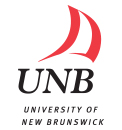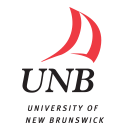Applied Science
| APSC1013 | Mechanics I | 5 ch (3C 3L* 1T) |
|---|---|---|
The fundamental concepts of vector analysis as applied to particles and rigid bodies. Forces and moments are introduced with vector algebra, followed by the application of equilibrium conditions. Free body diagrams (F.B.D's) are used to analyse trusses, frames and machines, as well as internal member forces (shear force and bending moment diagrams for beams). The analysis of kinematics of particle motion along straight and curved paths. Additional topics include friction, centroids, centers of gravity, and moments of inertia (area and mass). The course topics focus on visualizing concepts in mechanics and developing problem solving techniques. | ||
| APSC1023 | Mechanics II | 5 ch (3C 3L* 1T) |
|---|---|---|
Vector analysis and its application to the analysis of motion of particles and rigid bodies. Newton's three laws of motoin. The dynamics of particle motion along straight and curved paths. Coriolis acceleration. The dynamic analysis of particles and rigid bodies executing general plane motion based on Newton's second law (F=ma), work and kinetic energy, linear and angular impulse, and linear and angular momentum. Rotation of rigid body about a fixed axis. Simple harmonic motion. Corequisite: MATH 1013. | ||
| APSC2023 | A Survey of 19th and 20th Century Physics | 3 ch (3C) |
|---|---|---|
An introduction to ideas developed in Physics over the last two centuries. Topics will be drawn from Thermodynamics, Geometric and Physical Optics, Relativity, Quantum Mechanics and Atomic Physics. | ||
| APSC2028 | Survey of the 19th and 20th Century Physics Laboratory | 2 ch (3L) |
|---|---|---|


